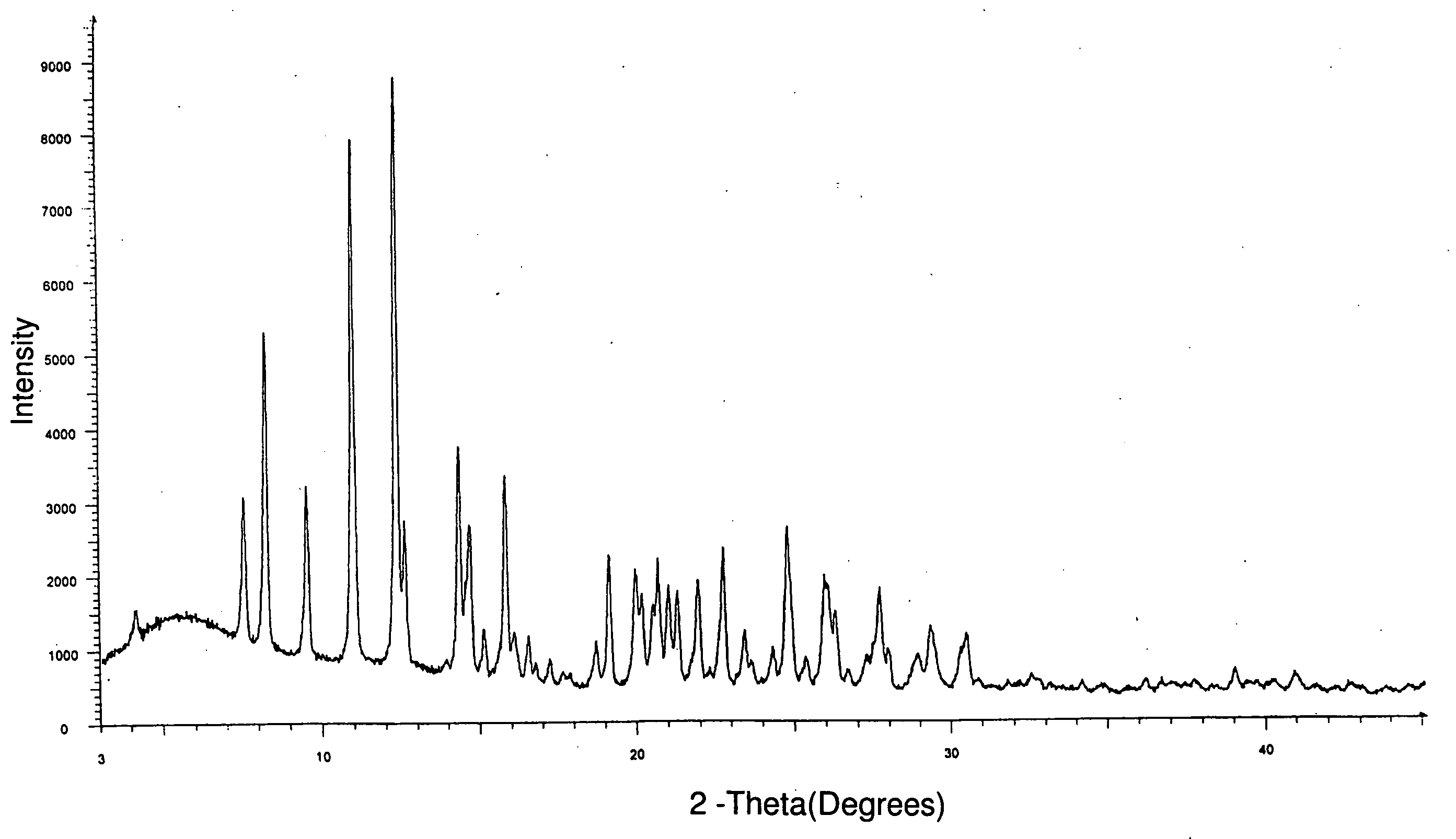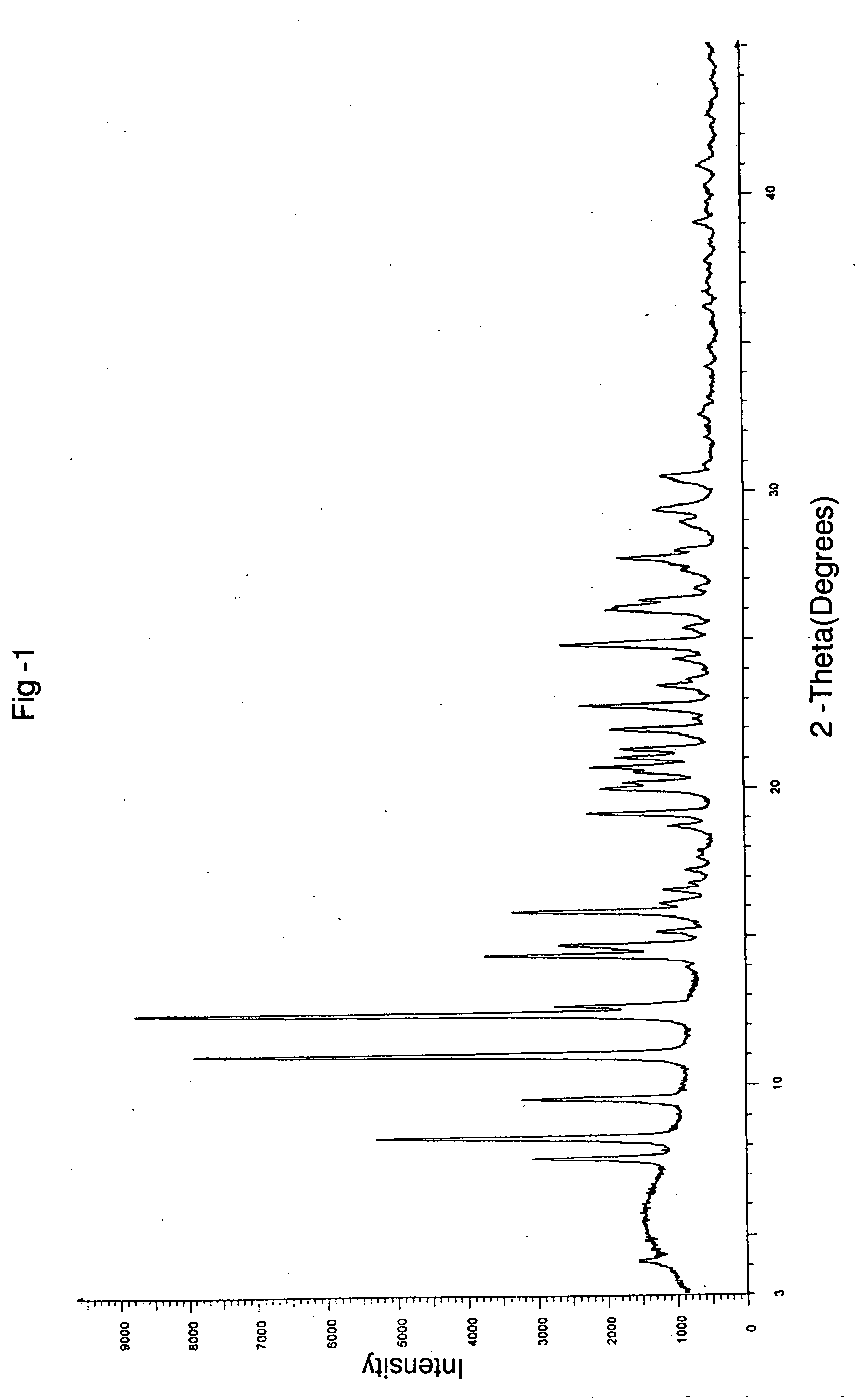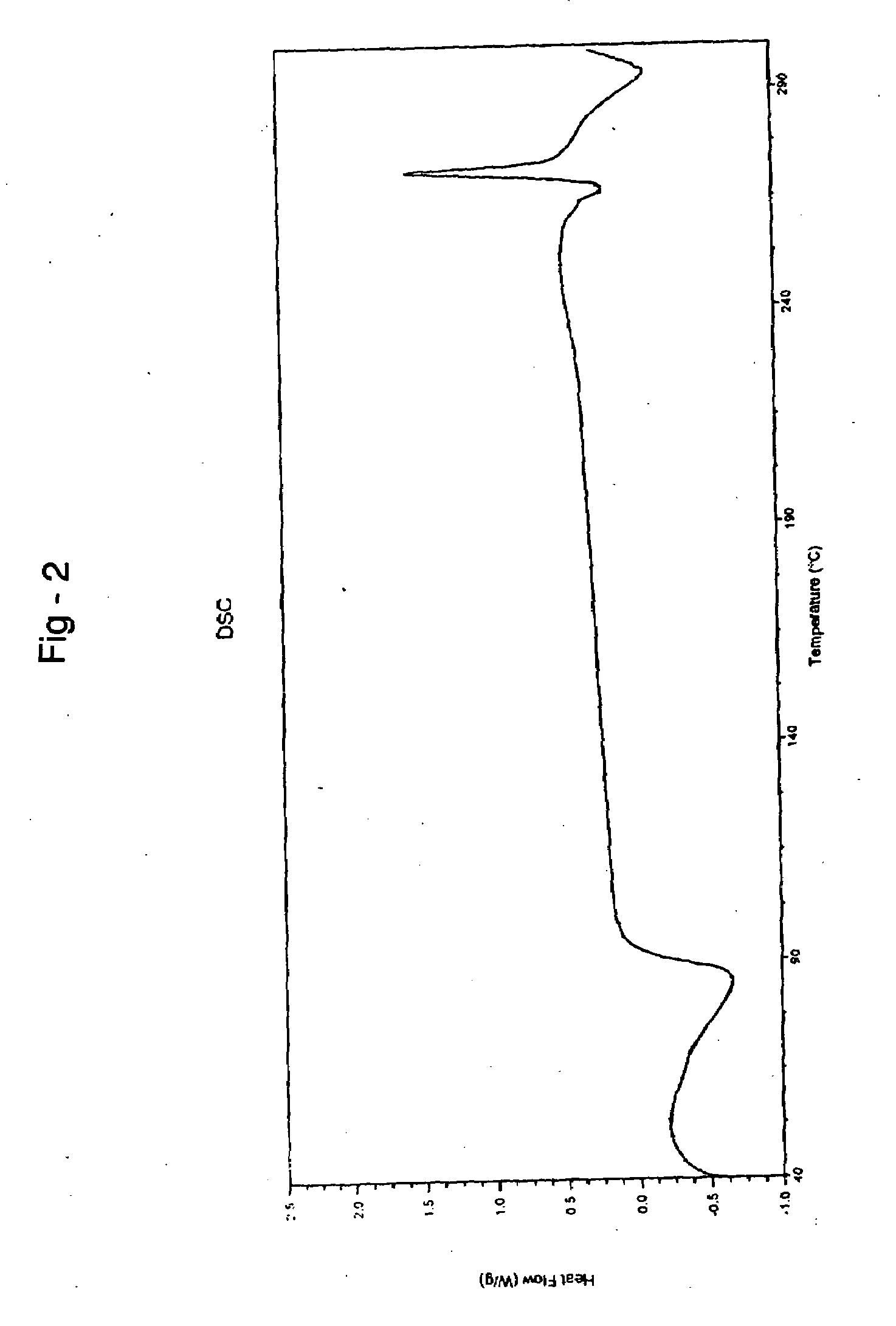Process for preparing irinotecan
a technology of irinotecan and process, which is applied in the field of process for the preparation of irinotecan, can solve problems such as the discovery of an industrial process
- Summary
- Abstract
- Description
- Claims
- Application Information
AI Technical Summary
Benefits of technology
Problems solved by technology
Method used
Image
Examples
example 1
PREPARATION OF 10-HYDROXY CAMPTOTHECIN
[0115]6 L of acetic acid and 60 ml of thioanisole were taken into a reactor and 2 Kg of camptothecin suspended in 6 L of acetic acid was charged. 666 g of platinum oxide was suspended in 6 L of acetic acid in another container and then the suspension was charged to the reactor at 27.5° C. The container was washed with 2 L of acetic acid and then charged into the reactor. The obtained reaction mixture was subjected to evacuation and then a pressure of 45 psi was applied using hydrogen gas, which was then slowly increased to 65 psi at 34.3° C. and the mixture was stirred for 10 minutes. The reaction mixture was heated to 61.9° C. and stirred for 6 hours at 63.7° C. and at 64 psi. Then the reaction mass was allowed to cool to 41.3° C. with stirring for 22 hours at 62 psi. Reaction completion was confirmed by thin layer chromatography (“TLC”). After completion of the reaction, the hydrogen pressure was slowly released and the reactor was flushed wit...
example 2
PREPARATION OF 7-ETHYL-10-HYDROXY CAMPTOTHECIN (FORMULA II)
[0118]125 g of 10-hydroxy camptothecin and 37.5 g of ferrous sulfate heptahydrate were charged into 3.75 L of water. 78.5 ml of propanal was charged into above solution with simultaneous stirring for about 10 minutes. The resultant reaction mixture was cooled to about 0° C. 1500 ml of concentrated sulfuric acid was added dropwise to the reaction mass over a period of 4 hours followed by the addition of 200 ml of 30% hydrogen peroxide solution at 0° C. over a period of 45 minutes. The reaction mass was allowed to reach 27° C. with simultaneous stirring for about 2 hours and then cooled to about 0° C. After the completion of the reaction, 7.2 L of 18% aqueous sodium hydroxide solution was added at 20° C. with simultaneous stirring over a period of 45 minutes. The solid separated was filtered and the solid was washed with 1 L of water. The obtained solid was slurried in 10 L of water for 30 minutes, followed by filtration and w...
example 3
PREPARATION OF 4-PIPERIDINOPIPERIDINE CARBAMOYL CHLORIDE
[0121]150 g of 4-piperidinopiperidine was dissolved in 10.5 L of dichloromethane and the solution was cooled to about 0° C. A solution of triphosgene (94.8 g of triphosgene in 1.2 L of dichloromethane) was added slowly to the solution at about 5° C. over a period of 45 minutes under a nitrogen atmosphere with simultaneous stirring. The resultant reaction mixture was stirred at 27° C. for 12 hours. The reaction mixture was filtered and then the filtrate was washed with 1.2 L of 7% sodium bicarbonate solution. The organic layer was separated and concentrated completely at about 40° C. under a vacuum of 580 mm Hg to afford title compound. Purity: 97.2% by GC.
PUM
| Property | Measurement | Unit |
|---|---|---|
| temperatures | aaaaa | aaaaa |
| temperatures | aaaaa | aaaaa |
| temperatures | aaaaa | aaaaa |
Abstract
Description
Claims
Application Information
 Login to View More
Login to View More - R&D
- Intellectual Property
- Life Sciences
- Materials
- Tech Scout
- Unparalleled Data Quality
- Higher Quality Content
- 60% Fewer Hallucinations
Browse by: Latest US Patents, China's latest patents, Technical Efficacy Thesaurus, Application Domain, Technology Topic, Popular Technical Reports.
© 2025 PatSnap. All rights reserved.Legal|Privacy policy|Modern Slavery Act Transparency Statement|Sitemap|About US| Contact US: help@patsnap.com



